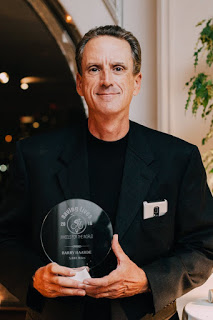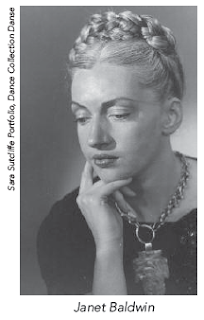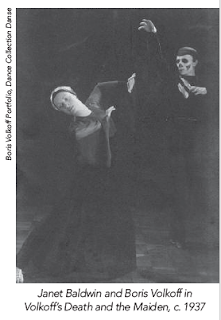Remembering the Rain: Barry Haarde
 I don’t know if this was ever published anywhere, but my dear, late friend Barry Haarde sent this to me shortly after we met. It expressed to me the depths of his soul, his feelings, compassion, caring. And his pain. Barry loved jazz and played it professionally; he said it was considered one of the highest forms of music. He was an incredibly intelligent man with a heart of gold and a sensitive, spiritual soul. And he as apparently an excellent writer. This essay is about love, our community, pain and longing. Read it and think of Barry. The title comes from a beautiful song by jazz player Bill Evans; on a CD that Barry gave me as a gift. https://www.youtube.com/watch?v=9l7qd3jTNu4
I don’t know if this was ever published anywhere, but my dear, late friend Barry Haarde sent this to me shortly after we met. It expressed to me the depths of his soul, his feelings, compassion, caring. And his pain. Barry loved jazz and played it professionally; he said it was considered one of the highest forms of music. He was an incredibly intelligent man with a heart of gold and a sensitive, spiritual soul. And he as apparently an excellent writer. This essay is about love, our community, pain and longing. Read it and think of Barry. The title comes from a beautiful song by jazz player Bill Evans; on a CD that Barry gave me as a gift. https://www.youtube.com/watch?v=9l7qd3jTNu4lives.”
-F. Scott Fitzgerald
“Why do you ignore me?” asked the pretty girl
with the lustrous black hair and the dark and wounded eyes-eyes that had
captured my imagination from the very first time she’d greeted me and sweetly asked
me my name. “I know something must have happened to you,” she said. “Why won’t
you talk to me?”
of 1990 and I had met someone special. She loved to dance and sing and had
aspirations of a career in the theatre. We’d met while performing in a musical
production together. I played the trombone from the relative seclusion and
anonymity afforded by the orchestra “pit”, while she practiced her craft under
the bright lights of center-stage. She was everything that I was not;
unabashedly extroverted and brimming with the passions of youth and the hopeful
expectations of what she dreamed her life would become.
her questions. How could I tell her that I had been recently diagnosed with
HIV, a dreaded disease that was rapidly spreading and killing hundreds of
thousands around the globe, creating an unstoppable wave of hysterical fear,
panic, and prejudice in its wake. I was already having a bad time of it in the
summer of ’90. My brother-in-law had just succumbed to a long and arduous
battle with AIDS, which he’d contracted from the same blood products I had used
to control bleeding caused by hemophilia. We were told the medications were
safe…they weren’t.
Pat’s memorial service. Friends and
family gathered in the usual way as they inevitably do at such times.
Condolences were offered and pleasantries exchanged. Most of those in attendance
were aware that they were attending the funeral of an AIDS victim, but the word
“AIDS” was carefully and meticulously skirted, as if a diaphanous veil of tacit
silence had descended over the whole affair. I sat next to my brother John;
also a hemophiliac and also HIV positive. My brother was very strong and I had
never seen him cry. I silently wondered if the same thought occupied his mind;
which of us would be the next to die? The answer came seventeen years later,
when John lost his battle with hepatitis C, that “other” virus with which we’d
also been infected. His HIV status was never mentioned at his funeral either. I
had personally insisted on it.
year that Ryan White died. I had watched for several years as the story of the White
family was told and retold in the mass media. Ryan’s life symbolized the plight
of many AIDS victims at the time. He was denied the right to attend school and
forced to move from his neighborhood after someone fired a bullet into the
window of the White family’s home. Audiences around the globe watched his story
unfold in front of the seemingly endless numbers of reporters who took up
residence on the street where Ryan lived, hoping to catch a glimpse of the new
“poster boy for AIDS.” Ryan’s remarkable bravery and his long struggle with hemophilia
and AIDS ended with his death on April 8th of that unbearable year.
White’s life was highly publicized and often sensationalized in the media, his
story was by no means unique. I’d seen other stories in the news, like that of
the Ray family, whose home was firebombed and burned to the ground by
belligerent neighbors, simply because they feared the three young Ray brothers
who were hemophiliacs living with AIDS. They didn’t want them in their schools.
of a young man named Robbie, who lived in rural Kentucky. Robbie had been born
with hemophilia, but he was good in school and had dreams of becoming a minister.
When his HIV status was exposed, Robbie received threats. People in their town
said they were going to “string him up from the nearest tree”. Robbie and his
mother moved in the dead of night to another town, only to encounter prejudice
and bigotry once again, including from the pastor of his new church, who
demanded that Robbie hang a sign around his neck disclosing his HIV status to
others. Robbie had unknowingly infected his fiancée with HIV. She died of AIDS
at the age of 21. Robbie never became a minister. He became ill with
complications from AIDS. Alone, except for his mother, who was then dying of
cancer, he ended his life by means of a fatal gunshot to the head.
the object of my youthful affections that my life was composed of such
stories-a life of experiences I felt certain she could never understand. How
could I explain the fate that had befallen so many in the hemophilia community,
many of whom were merely children. How could I tell her that I lived with the
same disease that had silenced the lives of thousands of others and that had
propelled many of those lives into a reality often defined by secrecy and quiet
desperation. To these, life had come
quickly and gone, leaving not bitterness, but pity; not disillusion but only
pain.
never did. Years later, I tried to locate her, but to no avail. I wanted to
explain it you see-to make it right, to make some sense of it somehow. I am left now with only memories; a memory of
something hoped for-something that might have been, but wasn’t-the memory of a love,
once discovered and lost, never to be relived again- and a memory of the day we
said goodbye.
you,” I whispered, as I embraced her for the last time and bid her farewell.
“You don’t love me,” she said dispassionately as she turned and walked away.
Our paths had parted now and I was certain we would not meet again. The skies
began to darken and a weary stillness settled in the air. I lingered for a
moment beneath the sprawling Oak tree which had shaded us as we’d sat and
talked one day while exchanging expectant glances into one-another’s eyes. A
sudden gust of wind claimed the last of its withering leaves; casualties of the
inevitable arrival of winter. Absent now were the familiar Mockingbirds that no
longer gathered and sang from amongst its gray and barren branches. I drove slowly away in the midst of a cold but
gently falling rain, the windshield wipers beating out their own curious
accompaniment to a long-forgotten tune which echoed faintly from the radio:
dreams.
out this way.
aside-
Rainy Day”, words and music by Jimmy Van Huesen and Johnny Burke, published
1953.
Bleeding Disorders Awareness Month Is Almost Here!
With March being officially recognized as Bleeding Disorders Awareness Month, I’m excited to join my voice with millions of others to continue raising awareness for the causes so close to my heart. It’s the perfect time to come together and show the world what makes our community special…beyond just having bleeding conditions.
Continue reading to check out how Aptevo Therapeutics, the makers of the factor IX treatment IXINITY® [coagulation factor IX (recombinant)], are getting involved this coming month.
This is a paid public announcement from Aptevo Therapeutics and does not constitute an endorsement of products or services. When you click on the links in this blog entry, you will be directed to the IXINITY website. LA Kelley Communications always advises you to be a savvy consumer when contacting any company; do not reveal identifying information against your will.
Spread the word and Just B Heard
With a community of millions of Americans who are affected by bleeding disorders, including over 4,000 people living with hemophilia B, we have the power to make a big impact when we work together.
So this March, we’re showing our support for the hemophilia B community that we’re so proud to be a part of by encouraging everyone to lend their voices and help get the word out. Together, we can shine the spotlight on this rare factor IX deficiency and bleeding disorders overall, plus more importantly, the incredible people behind them.
Because you are a vital part of the bigger bleeding disorders community, and you deserve to Just B Heard.
Join us in the IXINITY Family Room on Facebook all month long to see how you can get involved, plus watch fellow community members share their stories at IXINITY.com.
IXINITY INDICATIONS AND IMPORTANT SAFETY INFORMATION
What is IXINITY®?
IXINITY [coagulation factor IX (recombinant)] is a medicine used to replace clotting factor (factor IX) that is missing in adults and children at least 12 years of age with hemophilia B. Hemophilia B is also called congenital factor IX deficiency or Christmas disease. Hemophilia B is an inherited bleeding disorder that prevents clotting. Your healthcare provider may give you IXINITY to control and prevent bleeding episodes or when you have surgery.
IXINITY is not indicated for induction of immune tolerance in patients with hemophilia B.
IMPORTANT SAFETY INFORMATION for IXINITY®
- You should not use IXINITY if you are allergic to hamsters or any ingredients in IXINITY.
- You should tell your healthcare provider if you have or have had medical problems, take any medicines, including prescription and non-prescription medicines, such as over-the-counter medicines, supplements, or herbal remedies, have any allergies, including allergies to hamsters, are nursing, are pregnant or planning to become pregnant, or have been told that you have inhibitors to factor IX.
- You can experience an allergic reaction to IXINITY. Contact your healthcare provider or get emergency treatment right away if you develop a rash or hives, itching, tightness of the throat, chest pain, or tightness, difficulty breathing, lightheadedness, dizziness, nausea, or fainting.
- Your body may form inhibitors to IXINITY. An inhibitor is part of the body’s defense system. If you develop inhibitors, it may prevent IXINITY from working properly. Consult with your healthcare provider to make sure you are carefully monitored with blood tests for development of inhibitors to IXINITY.
- If you have risk factors for developing blood clots, the use of IXINITY may increase the risk of abnormal blood clots.
- Call your healthcare provider right away about any side effects that bother you or do not go away, or if your bleeding does not stop after taking IXINITY.
- The most common side effect that was reported with IXINITY during clinical trials was headache.
- These are not all the side effects possible with IXINITY. You can ask your healthcare provider for information that is written for healthcare professionals.
For more information about IXINITY, please see full Prescribing Information, including Important Patient Information.
You are encouraged to report side effects of prescription drugs to the Food and Drug Administration. Visit www.fda.gov/medwatch, or call 1-800-FDA-1088.
Aptevo BioTherapeutics LLC, Berwyn, PA 19312
IXINITY [coagulation factor IX (recombinant)] and any and all Aptevo BioTherapeutics LLC brand, product, service and feature names, logos, and slogans are trademarks or registered trademarks of Aptevo BioTherapeutics LLC in the United States and/or other countries.
© 2018 Aptevo BioTherapeutics. All rights reserved. CM-FIX-0214
A Giant Falls


Over five years, through his “Wheels for the World” campaign, Barry racked up over 20,000 miles, criss-crossing the US five times, and generating over $250,000 for the charity I founded, Save One Life. Barry sponsored a child himself and was an avid supporter for the poor in developing countries. Barry was an endurance machine, despite having HIV, and a contracted joint.
Puerto Rico Hoy
Efforts
by Hemophilia Federation of America
Summary
of Assistance Provided
disasters. Requests from families in California, Texas, and Florida have
dwindled, but we continue to provide regular assistance to families in Puerto
Rico who are still coping with the aftermath of Hurricane Maria.
January 31, 2018, Helping Hands (for “Together We Care”) has processed 80 applications for disaster relief. Total
relief funds distributed to date are $19,708.53.
Moving into February, there are 13 pending applications in the works with
needs identified at approximately $26,000 and others to follow up on.
 Primary types of assistance distributed includes groceries,
Primary types of assistance distributed includes groceries,batteries, clothing, toiletries, cash assistance for household bills, aqua tablets,
water, first aid items, cold packs, and other basic needs and rebuild supplies.
Together
We Care: Next Steps
requests for short-term immediate support and long-term needs such as home
repairs, furniture, etc.
families identified by the HTC that have not yet been served in our assistance
records. Cell phone service seems to be largely up and running now so the
current focus is via phone contact vs. home visits. Outreach includes an
assessment of short and long-term needs and evaluating if assistance should be
provided to the family.
basic services still unavailable, recovery has been a slow journey for many
Puerto Ricans. January 31, 2018 new reports indicate over 500,000 households
are still without power on the island, particularly in rural and mountain
areas. We have met with community families as recently as the last few weeks who
still do not have running water.
gas stations, etc. largely be fully operational. While a great deal of cleanup
remains, roads are more and more accessible.
The added challenge we see is that the months of shut-down resulted in
drastic increase of additional unemployment resulting in no opportunity for
income which only adds to the time it will take to get families back on their
feet.
We can’t forget our Puerto Rican Americans with bleeding disorders once FEMA’s
aid ends.
Additional
|
About Together We Care: Disaster
Relief Efforts
community has a long history of rallying around our families in need. In 2017,
the US faced an unprecedented number of natural disasters. National bleeding
disorders organizations such as Hemophilia Federation of America, the National
Hemophilia Foundation, the Hemophilia Alliance, Hemophilia Alliance Foundation,
LA Kelley Communications, the national network of hemophilia treatment centers
and others have partnered to create the “Together We Care” disaster relief assistance fund.
Families helped have been gracious and thankful
for the caring and support.
Dancing with Hemophilia: Janet Baldwin
By Richard Atwood
First published in PEN, November 2017
We repeatedly hear the message that regular exercise is beneficial for our health and well-being. Yet always heeding that advice over a lifetime can be a challenge. My suggestion? Include dancing as a fun component in your repertoire of exercises.
Exploring the world of dance, I became intrigued with Janet Baldwin, a hemophilia carrier. Janet made a lifelong career of dance in Canada, even performing at the 1936 Olympics. As part of her legacy, Janet inspired the award-winning Canadian author Timothy Findley to create a fictional character modeled on her life.
Catherine Janet Baldwin was born in 1912 in Toronto. Her family were descendants of the politician Robert Baldwin (1804-1858), who in 1841 brokered the coalition of Upper and Lower Canada—now known as Ontario and Quebec. This was an important step in the eventual formation of the provincial government of Canada. Something of a rebel in her wealthy family, Janet followed her passion for dancing to become a professional dancer,teacher, and choreographer. She studied ballet in Canada, America, and England. Janet went on to found her own ballet studio and to co-found the Canadian Dance Teachers Association. She was a member of the Royal Academy of Dancing.
A boost to Janet’s early dancing career was her 1936 marriage to Boris Volkoff (1900–1974), a ballet master who is sometimes called the father of Canadian ballet. Janet progressed from being Volkoff ’s student to being his wife and then his business partner in the Boris Volkoff School of Dance. Janet’s family did not approve of the marriage. The older, irascible Volkoff kept his Russian accent. He taught the more athletic style of ballet that he learned in Russia before defecting to Canada in 1929.
The couple’s personalities contrasted: Janet was known for her infectious energy, while Volkoff was considered flamboyant. Just a month into their marriage, the Volkoffs led a delegation of about 14 amateur Canadian dancers to the International Dance Competitions at the 11th Olympic Games in Berlin, 1936. The Germans wanted “art competitions,” including dance,
 added to the Olympics, but the International Olympic Committee denied the request. Instead, the choreographer Rudolf von Laban organized dance celebrations before and during the athletic events. For political reasons, countries including America, England, France, Sweden, and Russia boycotted the dance competitions held in Nazi Germany; still, 14 countries participated. Because Olympic medals could not be awarded in dance, each participating dancer, including Janet, received a diploma. Volkoff, always a promoter who loved to exaggerate, maintained that of the six honorable mentions awarded, the Canadians were the only amateurs, while the other countries had professional dancers. Returning to Toronto, in 1938 Volkoff formed the Boris Volkoff Canadian Ballet, a nonprofessional ballet company, with Janet as his business partner. The couple also helped to organize the annual Ballet Festival, beginning in 1948, which brought together the existing Canadian ballet companies. Volkoff envisioned a touring professional company, but failed in his effort to be artistic director of the newly founded National Ballet Company of Canada in 1951.
added to the Olympics, but the International Olympic Committee denied the request. Instead, the choreographer Rudolf von Laban organized dance celebrations before and during the athletic events. For political reasons, countries including America, England, France, Sweden, and Russia boycotted the dance competitions held in Nazi Germany; still, 14 countries participated. Because Olympic medals could not be awarded in dance, each participating dancer, including Janet, received a diploma. Volkoff, always a promoter who loved to exaggerate, maintained that of the six honorable mentions awarded, the Canadians were the only amateurs, while the other countries had professional dancers. Returning to Toronto, in 1938 Volkoff formed the Boris Volkoff Canadian Ballet, a nonprofessional ballet company, with Janet as his business partner. The couple also helped to organize the annual Ballet Festival, beginning in 1948, which brought together the existing Canadian ballet companies. Volkoff envisioned a touring professional company, but failed in his effort to be artistic director of the newly founded National Ballet Company of Canada in 1951.
Instead, the chosen director was Celia Franca, who promoted the British style of ballet, leaving Volkoff bitter and disillusioned.
The Volkoffs had a contentious marriage. A major issue was children. Volkoff wanted children, but Janet felt she shouldn’t have any because she was a hemophilia carrier. She feared that any male child with hemophilia would bleed to death. Janet had multiple abortions in Buffalo and Chicago under appalling conditions. After Volkoff had affairs with younger women, the childless couple divorced in 1951. Volkoff remarried, but when he was alone and dying in 1974, Janet remarried him without a license in a religious ceremony. Janet founded the Janet Baldwin School of Dance, and directed it for over 25 years. Late in life, she developed emphysema and, at the end, dementia. Janet died in 1990 in Toronto. Very little information is available about her family history of hemophilia, almost as if the family wanted to keep it secret. No other family member is identified as having the hemophilia gene, and Janet’s medical issues involving hemophilia are unknown.
Timothy Findley (1930–2002), author of The Butterfly Plague (1969), grew up in the prestigious Rosedale section of Toronto. He first met Janet Baldwin—notable for her white hair, blue eyes, and poise—when he was about seven years old. He remembered Janet dancing on the beach sand, or elegantly dressed at the Atlantic House Hotel in Maine where both their families vacationed every summer. Findley studied ballet, first from Volkoff and then from Janet, before a back injury ended his dancing career. He remembered the bruises caused by Volkoff ’s black walking stick, known as “Volkoff tattoos,” during his ballet lessons. Findley then turned to speech and drama classes so he could express himself as an actor before becoming a writer. The Butterfly Plague is set in Hollywood, 1938. Findley based his fictional character, Ruth Damarorsch, on Janet Baldwin—his friend,
teacher, and dance collaborator—even dedicating the novel to Janet. There are several similarities
between the real Janet and the fictional character: both are hemophilia carriers with white hair and
blue eyes. But there are also some differences, for example, in physical appearance and talents. Ruth wins three gold medals in swimming at the 1936 Berlin Olympics. She eventually has children in the edition of the novel, but not in the 1986 rewritten edition.
Yet as hemophilia carriers, both Janet and the fictional Ruth felt they had “tainted blood.” Being a hemophilia carrier didn’t prevent Janet Baldwin from dancing her entire life. Sadly, based on the medical care available in the 1930s and 1940s, Janet feared that any of her children would die from hemophilia, so she did not car ry any pregnancies to term. Fortunately, today those medical concerns are allayed with appropriate treatment. I hope Janet’s story will inspire you to consider dancing as a form of exercise throughout your life. If you’re wondering whether I follow my own advice, let’s just say that I tend to dance in private.








